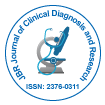Research Article
Assessment on Knowledge, Attitude and Practice with Regard to the Transmission and Prevention of HIV/AIDS among Barbers and Beauty Salon Workers in Hossana Town, South Ethiopia, 2017
Ayano Wakjira B*Department of Public Health, Haromaya University, Hosana, Ethiopia
- *Corresponding Author:
- Bizuneh Ayano Wakjira
Department of Public Health, Haromaya University, Hosana, Ethiopia
Tel: 251961417850
E-mail: bizunehayano@gmail.com
Received date: February 06, 2017; Accepted date: February 17, 2017; Published date: February 22, 2017
Citation: Wakjira AB (2017) Assessment on Knowledge, Attitude and Practice with Regard to the Transmission and Prevention of HIV/AIDS among Barbers and Beauty Salon Workers in Hossana Town, South Ethiopia, 2017. J Clin Diagn Res 5:136. doi: 10.4172/2376-0311.1000136
Copyright: © 2017 Wakjira AB. This is an open-access article distributed under the terms of the Creative Commons Attribution License, which permits unrestricted use, distribution, and reproduction in any medium, provided the original author and source are credited.
Abstract
Background: HIV/AIDS still remains a major public health problem all over the world. Skin is one of the innate, barriers for pathogens to enter and used as protective organ. its integrity is responsible in prevention of infection like HIV/AIDS. Barbers and beauty salons are cosmetic workers that undertake skin-piercing practices involving reusable sharp instruments, which present risks for transmission of HIV and other blood-borne pathogens. Barbers procedures can in advertently damage the skin through abrasion or minor accidental cuts. Simple nick caused by clipper or razor blade is enough for infection to occur. HIV transmission through sharing of non-sterile sharp instruments used for barbering, circumcision, facial scarification, incision, tattooing, ear perforation, bloodletting, injections and acupuncture have always been given less attention in the spread of HIV. Since it is necessary to assess on knowledge, attitude and practice with regard to the transmission and prevention of HIV/AIDS among barbers and beauty salon workers.
Objectives: This study attempts to assess barbers and beauty salons knowledge, attitude and practice regards to the transmission and prevention of HIV/AIDS in Hossana town.
Methods: Across-sectional study was conducted to assess on knowledge attitude and practice with regard to the transmission and prevention of HIV/AIDS among barbers and beauty salons in their working place (barber shops) in Hossana town from January2-30, 2017.A semi-structured questionnaire and check list was used for data collection. The total budget used to conduct over all study was12846.5 Ethiopian birr.
Result: From a total of 81 Barbers and Beauty salons participated in the study 50.6% were male. 54.3% were protestant and 29.6% orthodox. Regarding marital status 62.9% were single and 24.7% married with age distribution of 20-24 (45.6%), 25-29 (31%) and Educational status 74.1% secondary school and above. The major ethnic groups were Hadiya (51.8%) followed by Amhara 17.3%. Those that had taken training 31% confronted bleeding accidents due to cut or piercing during barbering 70.3%, clients coming with skin lesions on head in the previous two weeks 61.7%, barbers and beauty salons skin lesion on their hand in the previous two weeks 65.4%. Most of them use scissors 77.7% electrical shaver 49.4% and razor blades 39.5%. All of them herd about HIV/AIDS; 50.6% from media and 18.5% from Health professionals. On mode of Transmission they reported that 90% by unsterile injection, 85.5% by sex, 56.8% by kissing and 40.7% by Insect bite. Only 34.5% know that their professions expose them to HIV. Those using the same brush 81.4%, glove usage 9.8%, using soap for disinfection 53.1% using hand held flame for sterilization 23.4%.Frequency of disinfection were every session 28.4% and weekly 35.8%. Those dispose wastes and sharp objects to open field were 53%. Religious, income, age and using Mass media like T.V, radio were significant predictors associated with equipment’s Sterilization for each client served.
Conclusion: This study has revealed that good knowledge and positive attitude towards Transmit ion and prevention of HIV/AIDS among Barbers and Beauty salons. But the barbering procedures in the study have the risk for HIV transmit ion through use of non-potent disinfection methods and improper handling of sharp instruments. Poor usage of glove, use of the same brush for each client and blade to scalp contacts in most of the sessions observed. Religious, income, age and using Mass media like T.V., radio were significant predictors associated with equipment’s Sterilization for each client served. Therefore barbers and beauty salons could serve as core group for indirect transition of HIV/AIDS. This should be of great concern to effectively control HIV/AIDS. Health Education strategies such as training, supportive supervision and peer education are needed to facilitate the adoption of effective precaution Measures against HIV infection among Barbers and Beauty salon workers.

 Spanish
Spanish  Chinese
Chinese  Russian
Russian  German
German  French
French  Japanese
Japanese  Portuguese
Portuguese  Hindi
Hindi